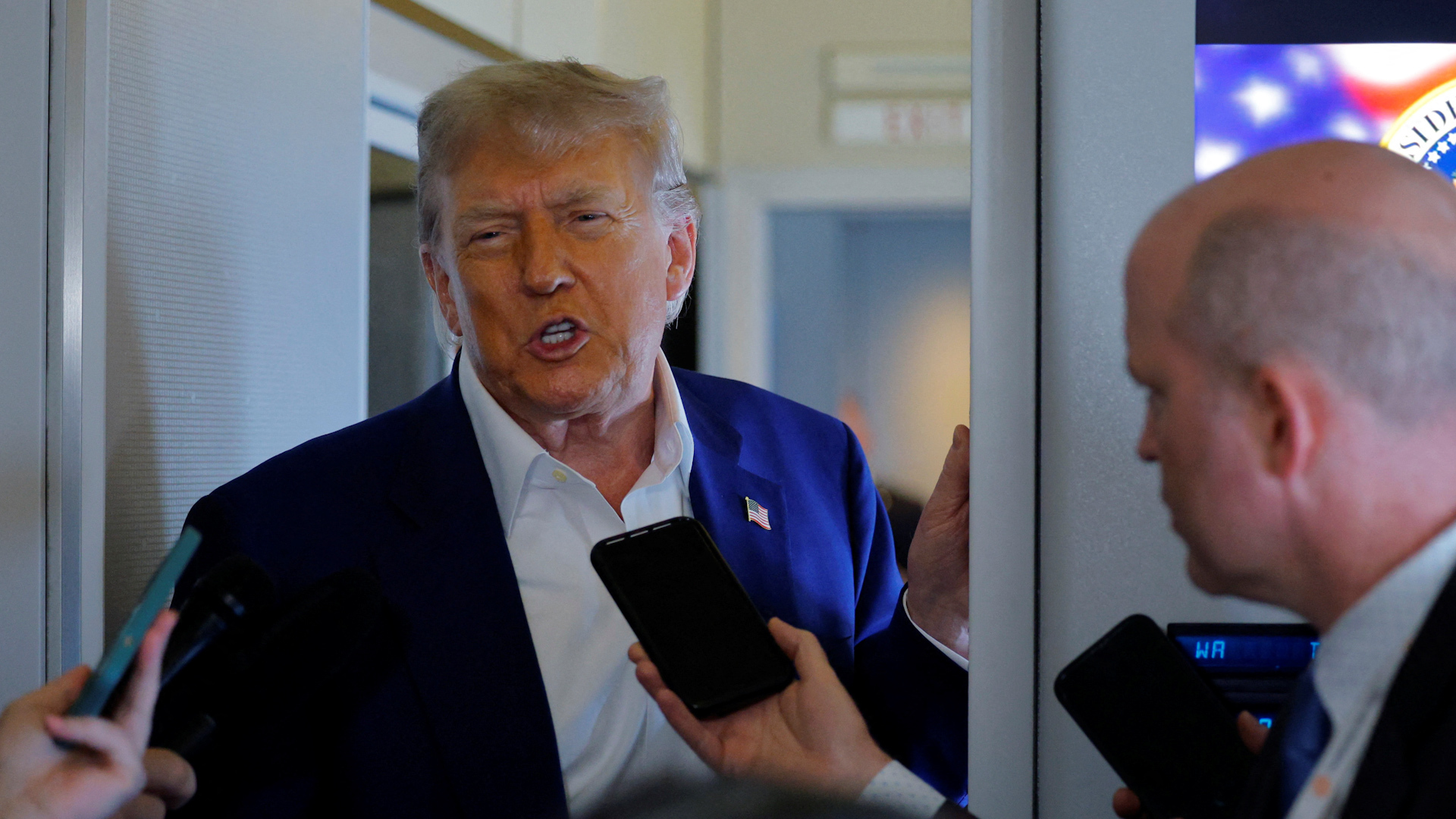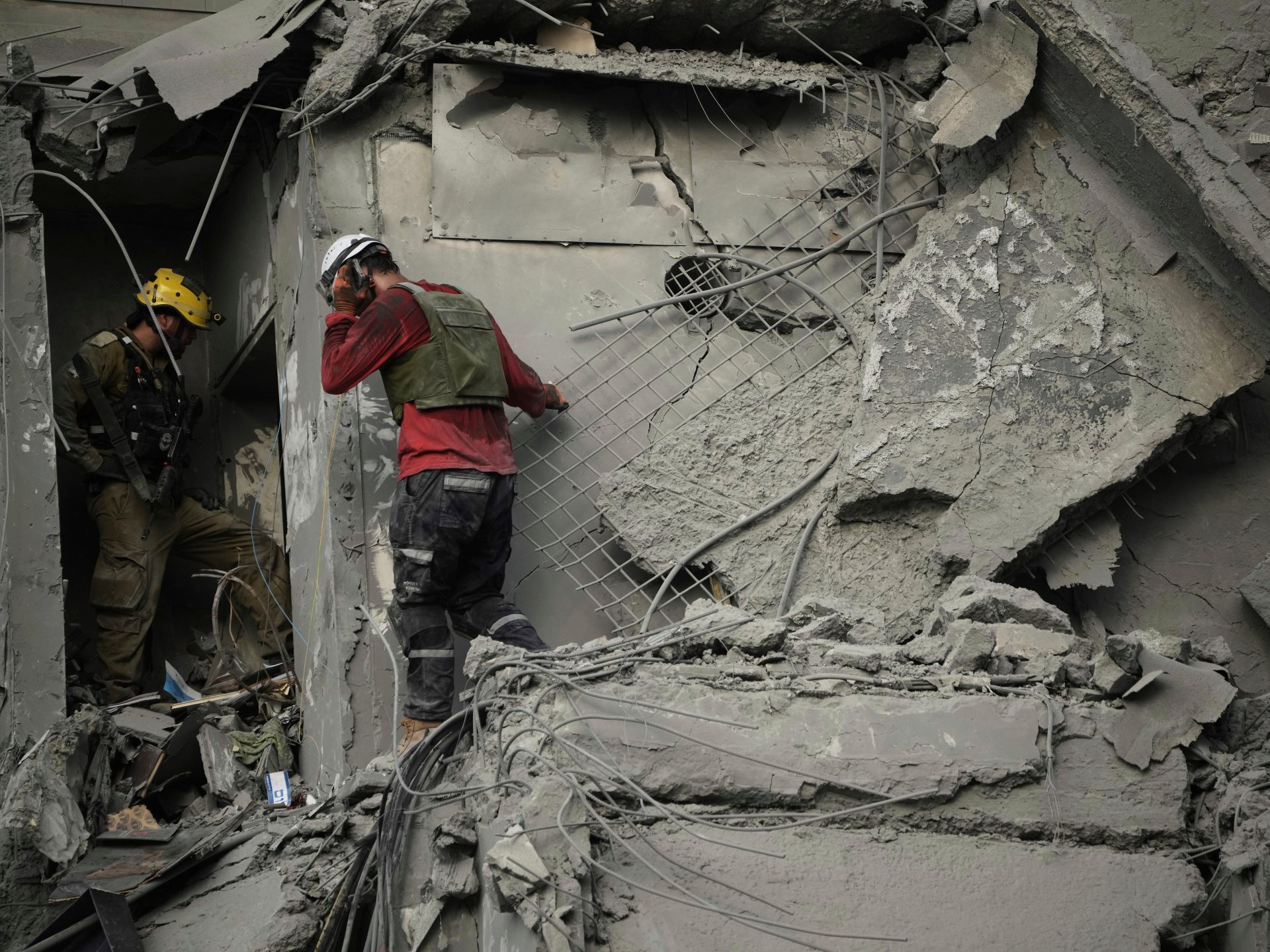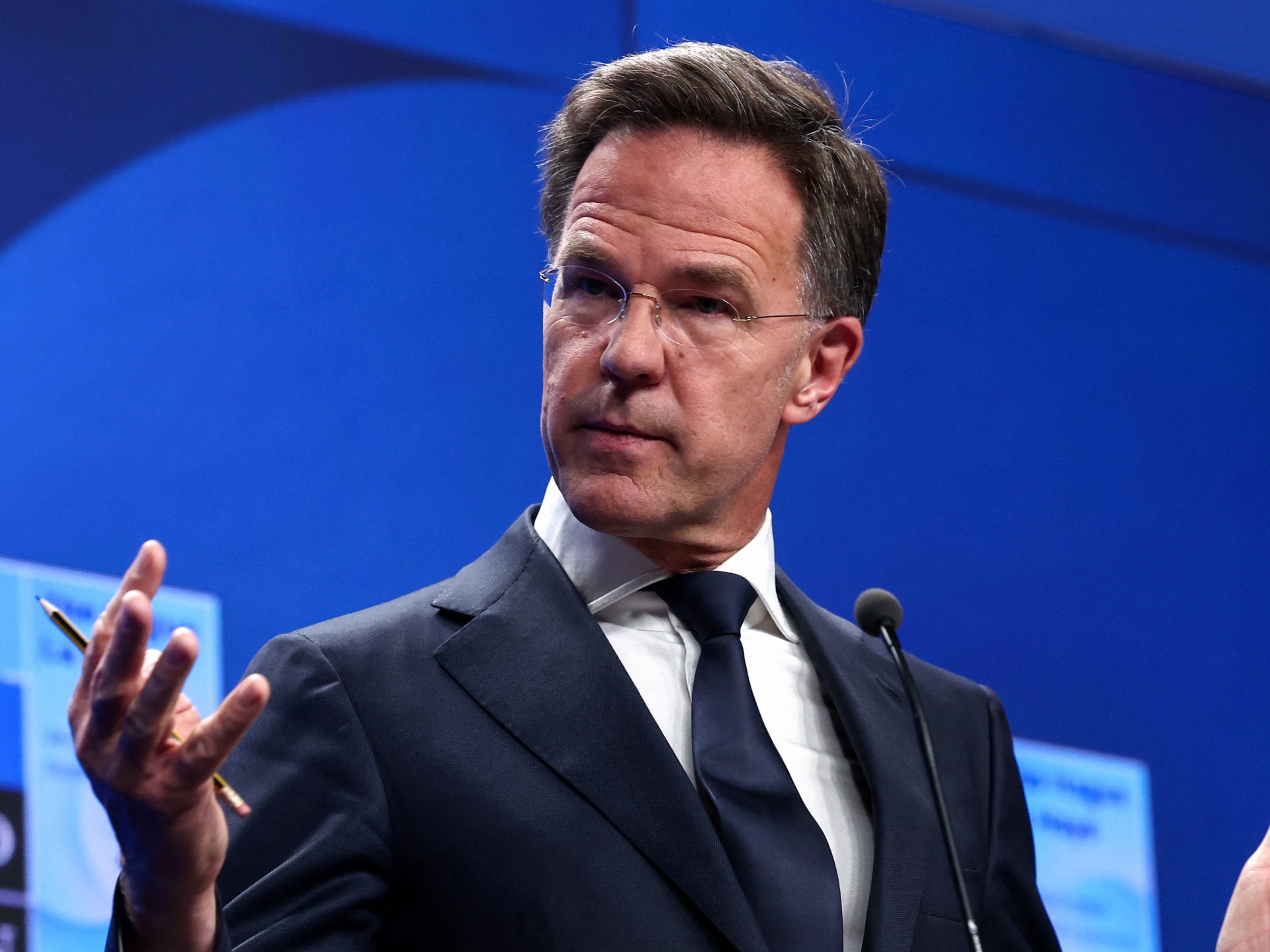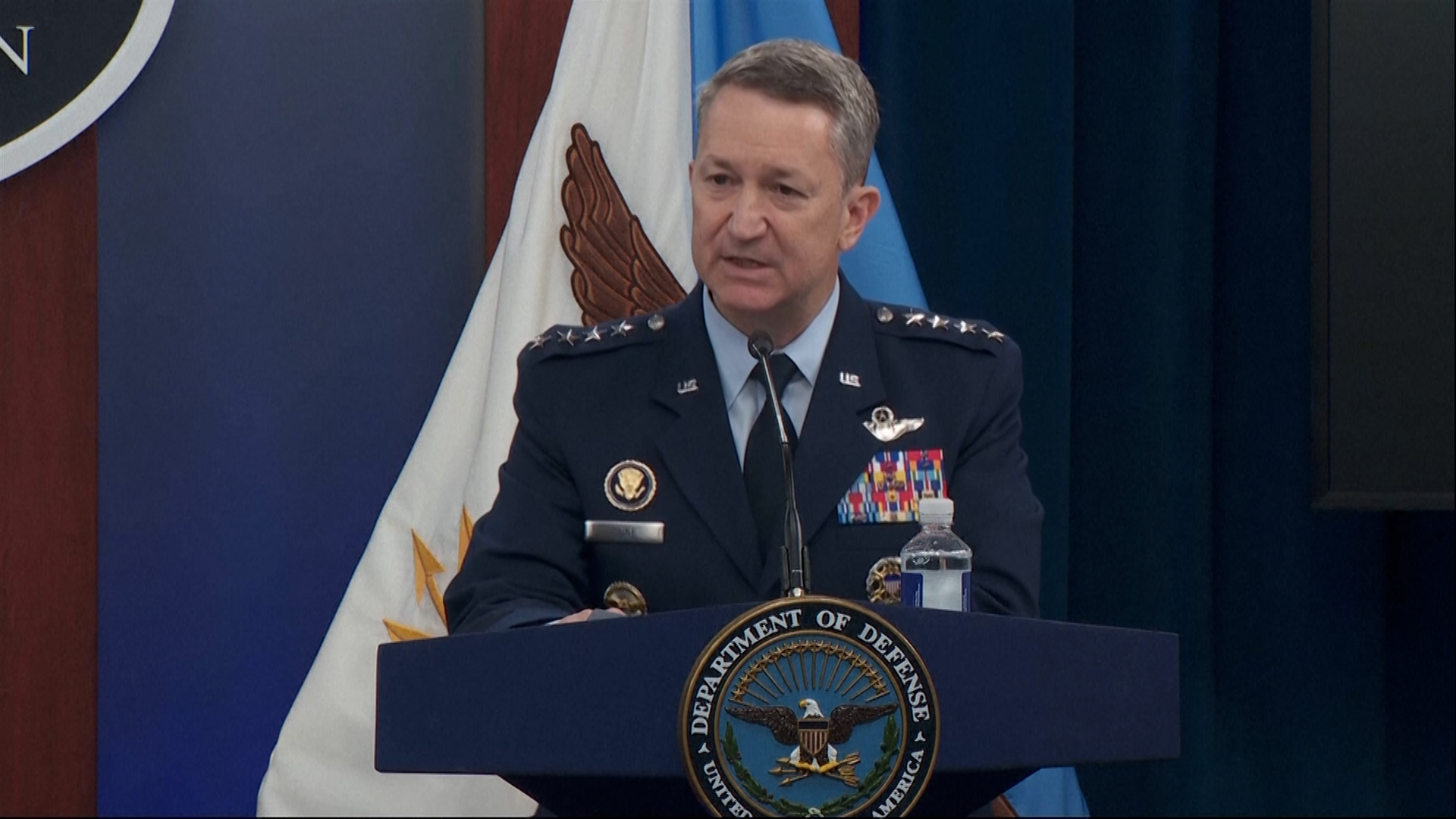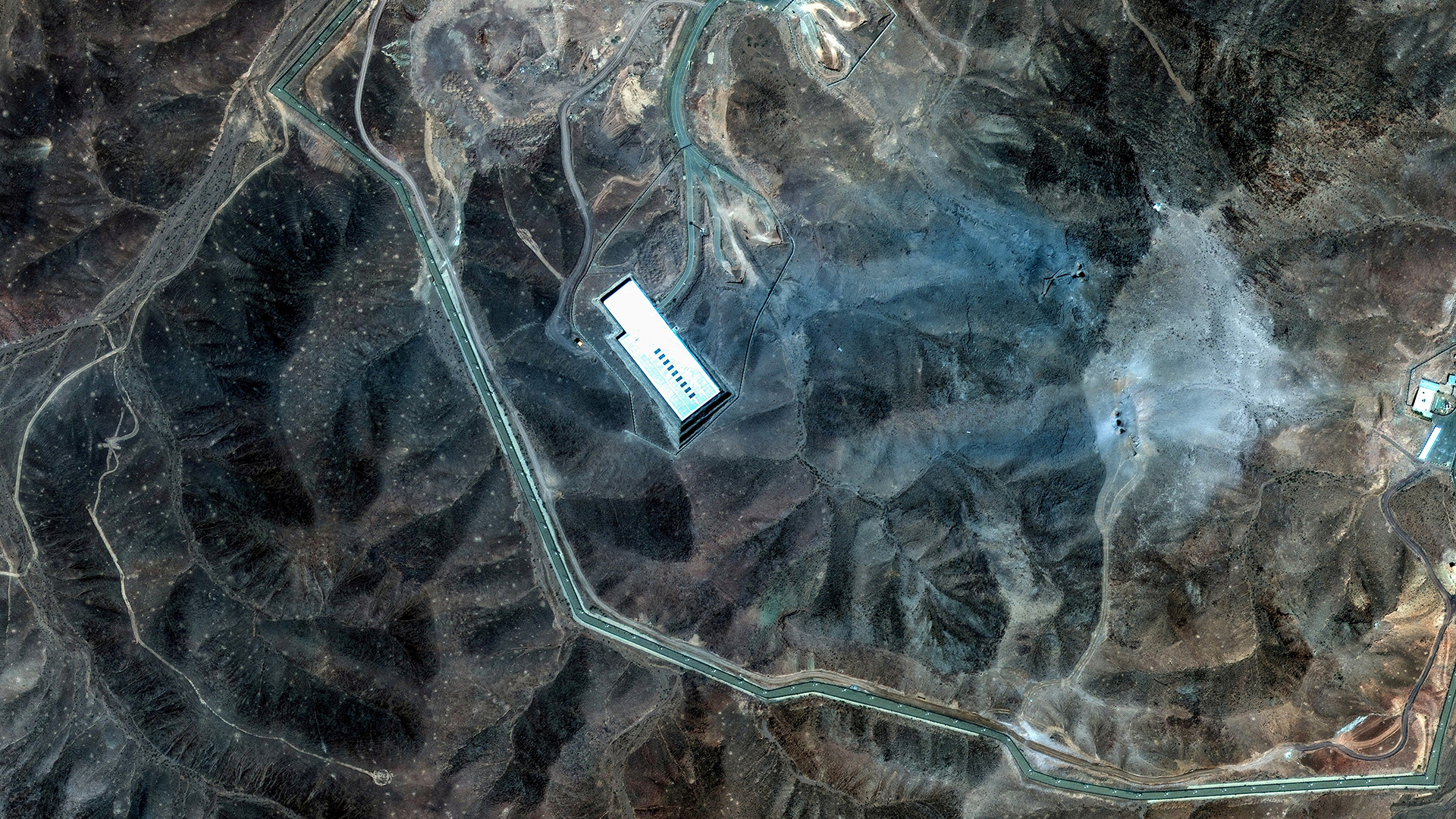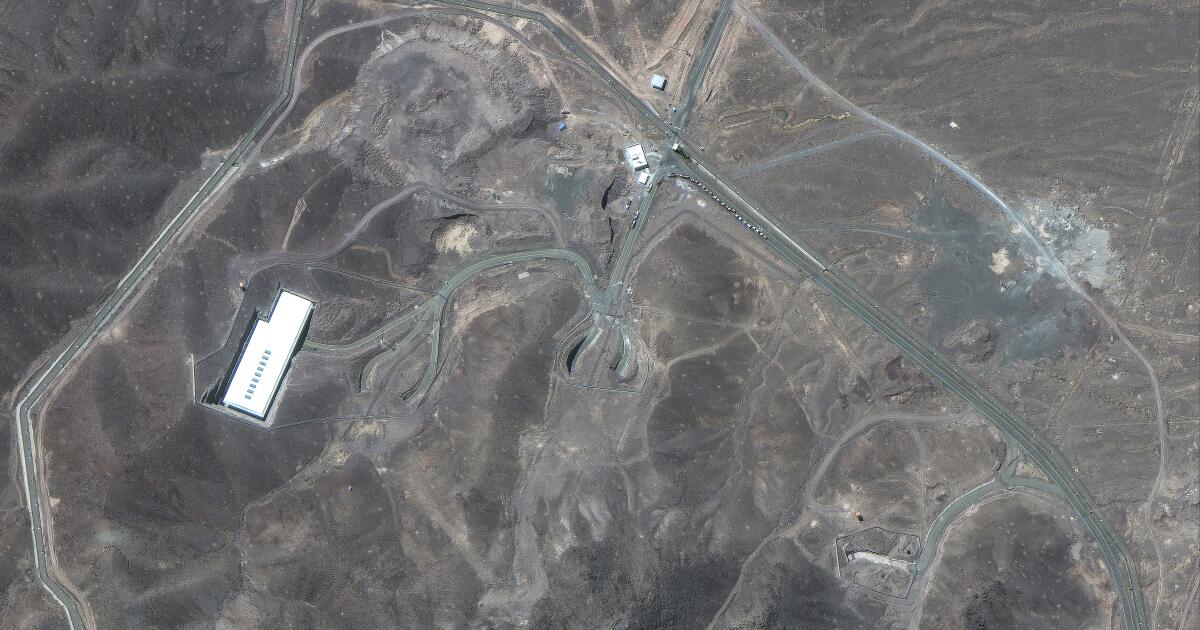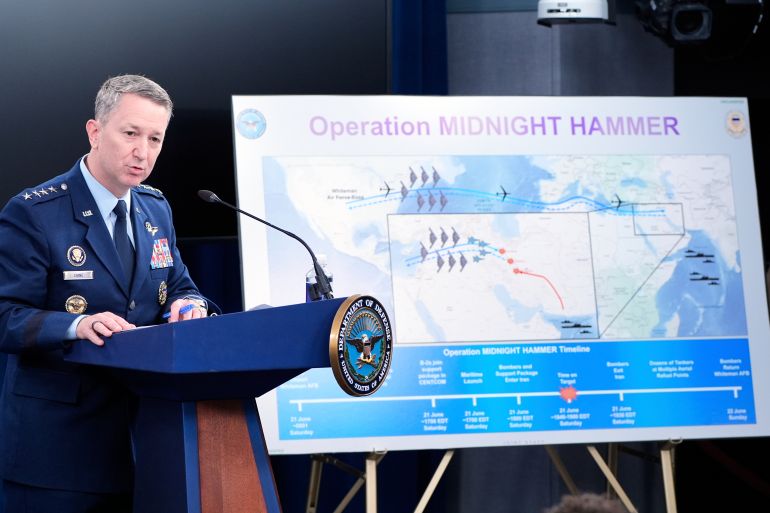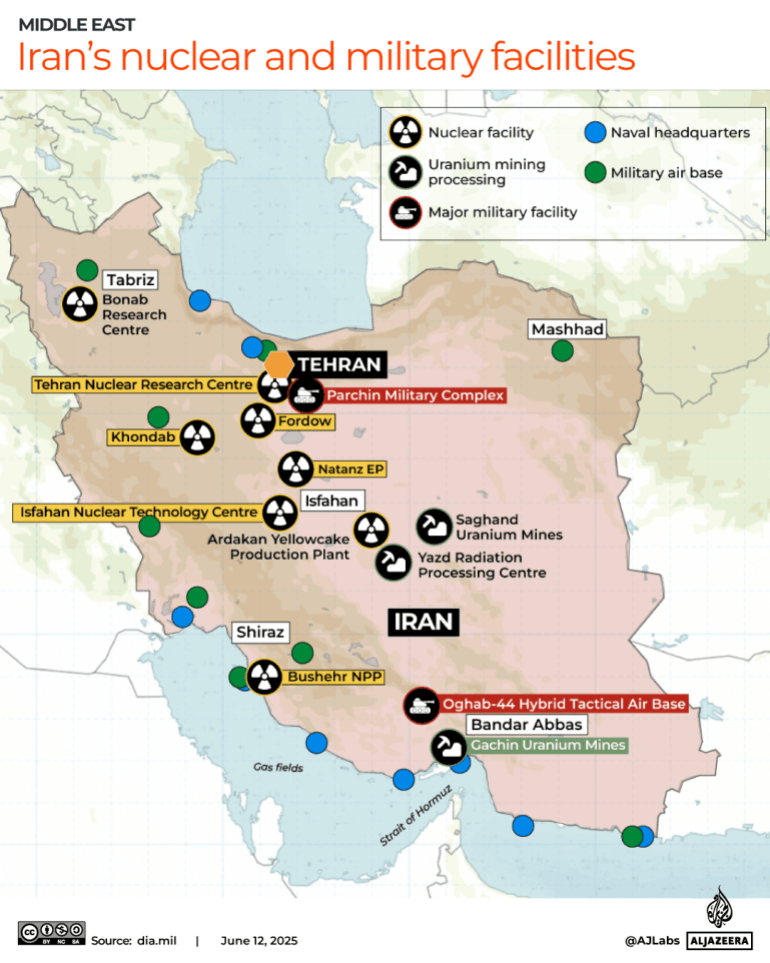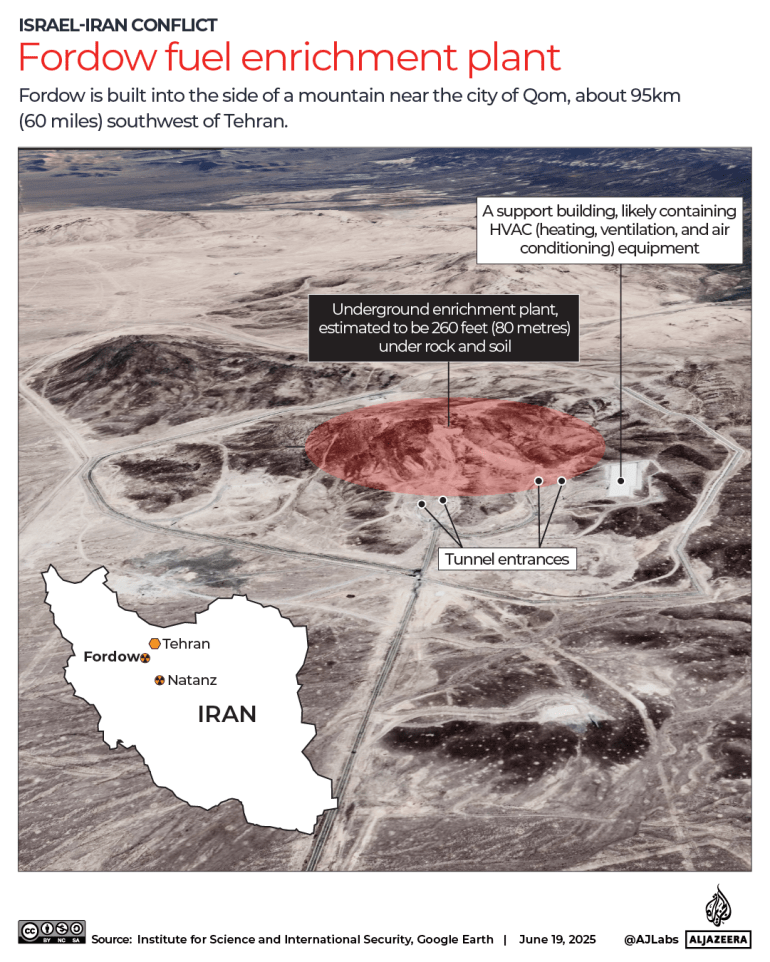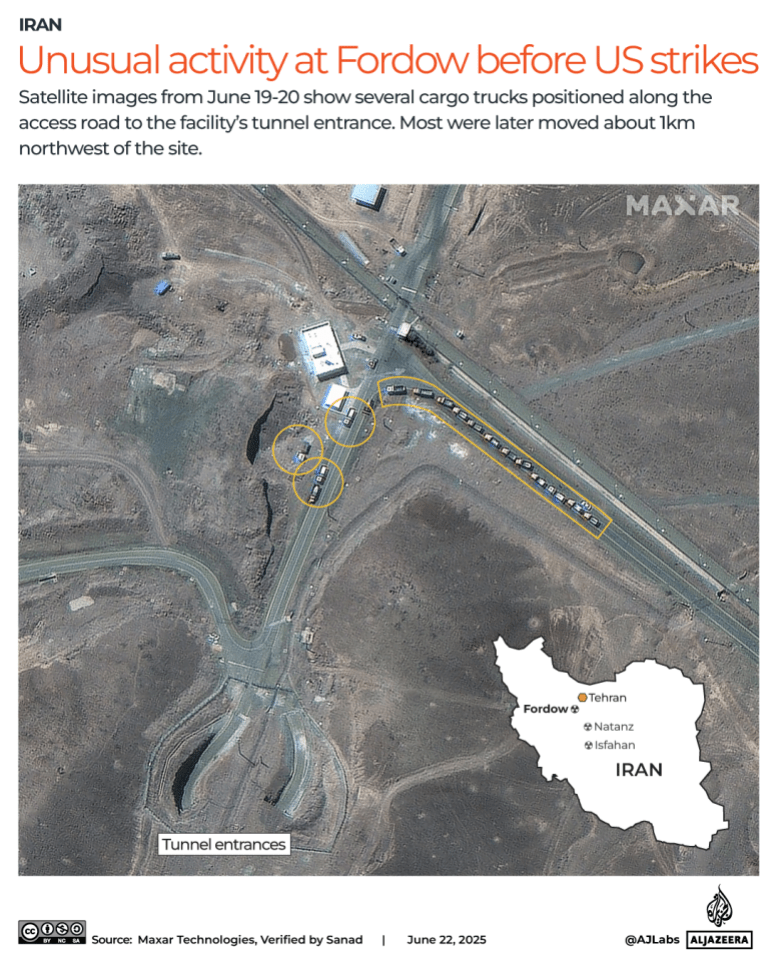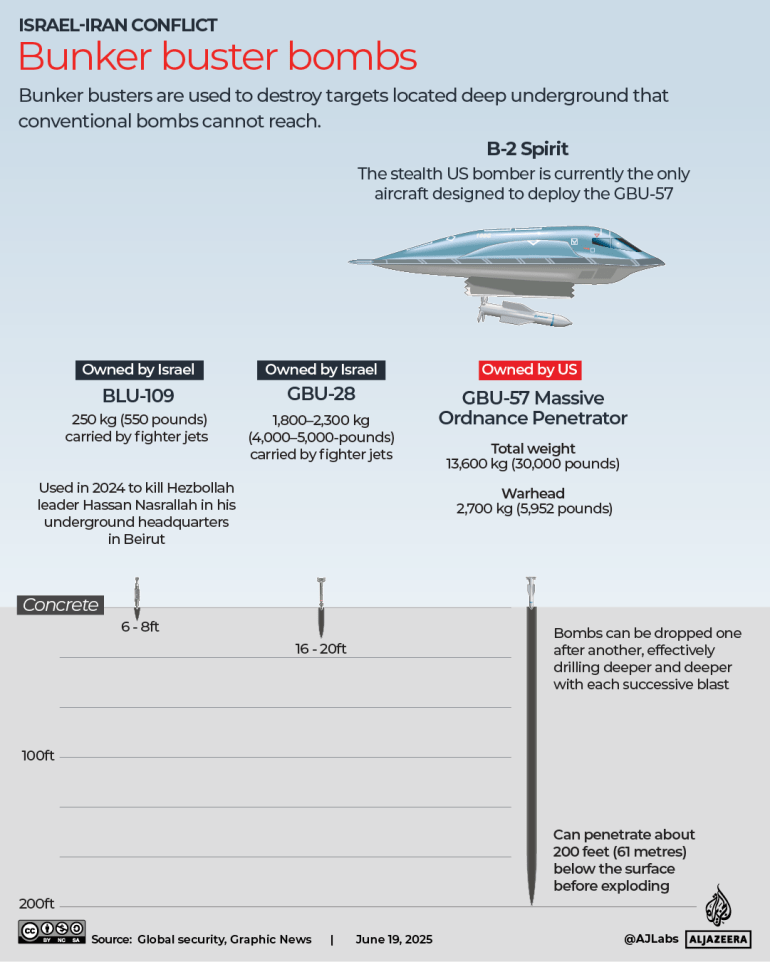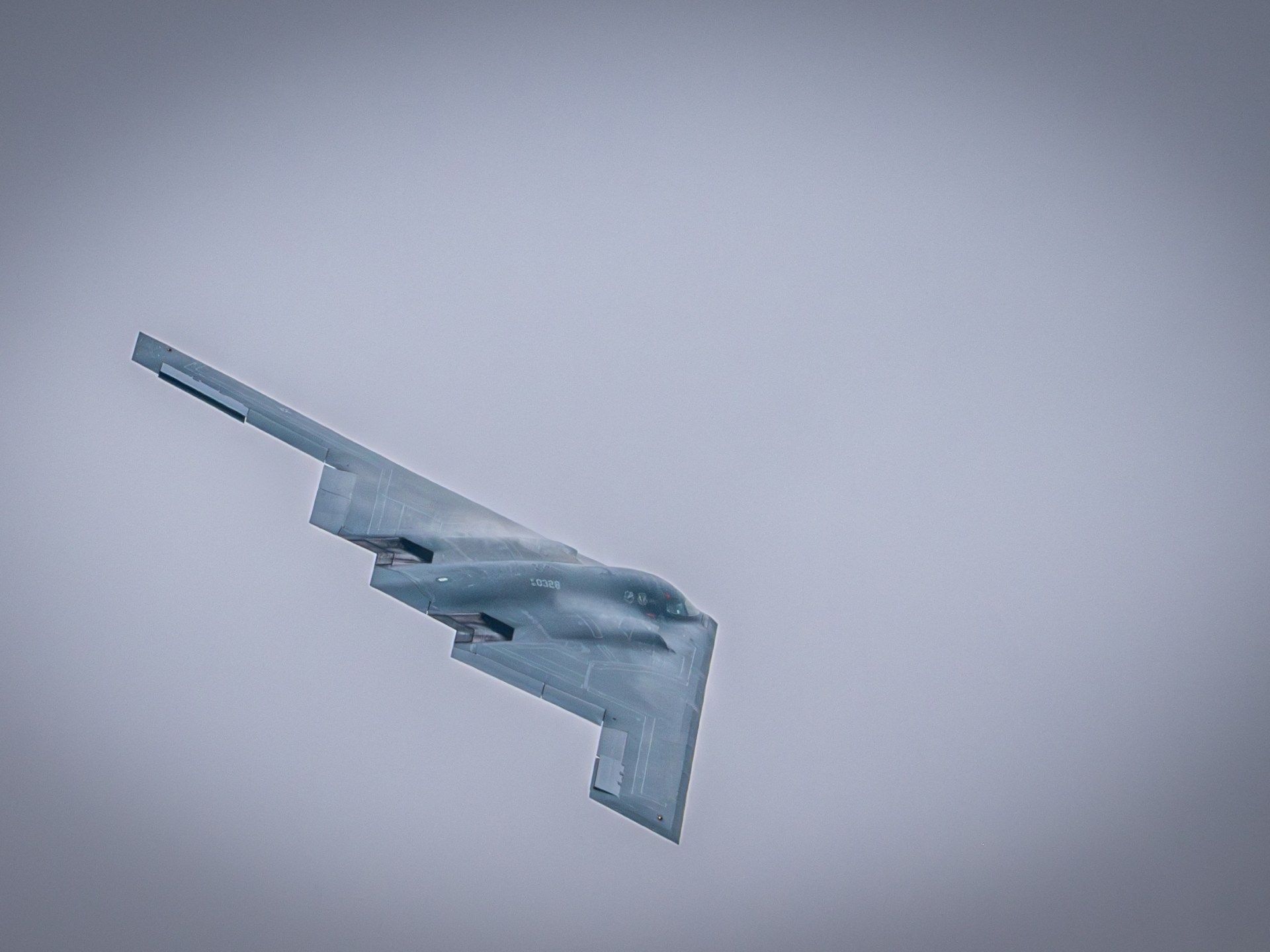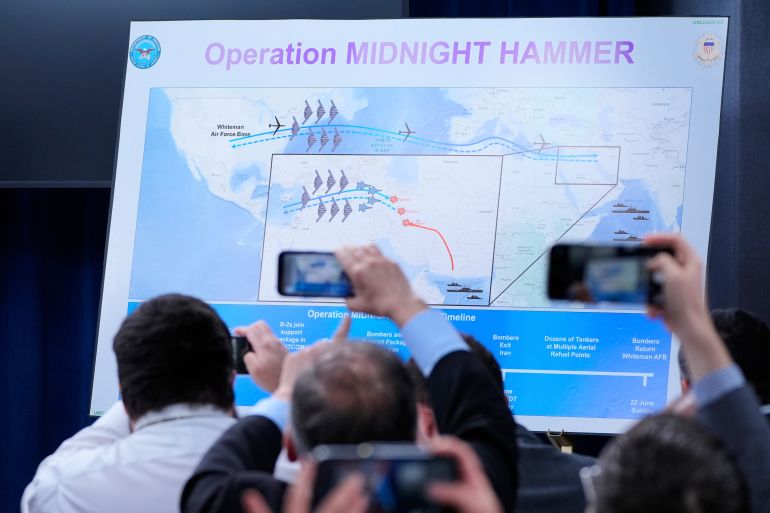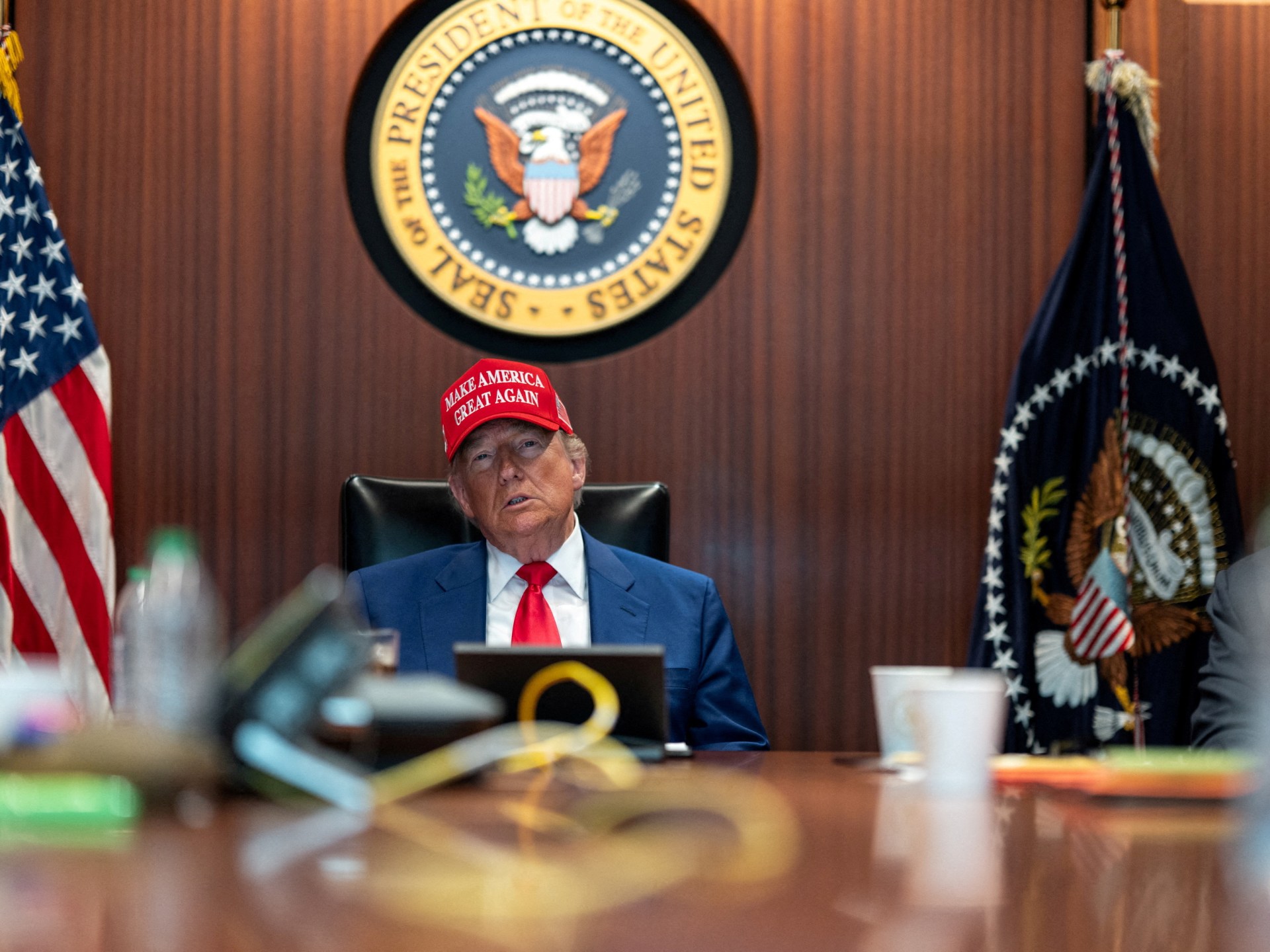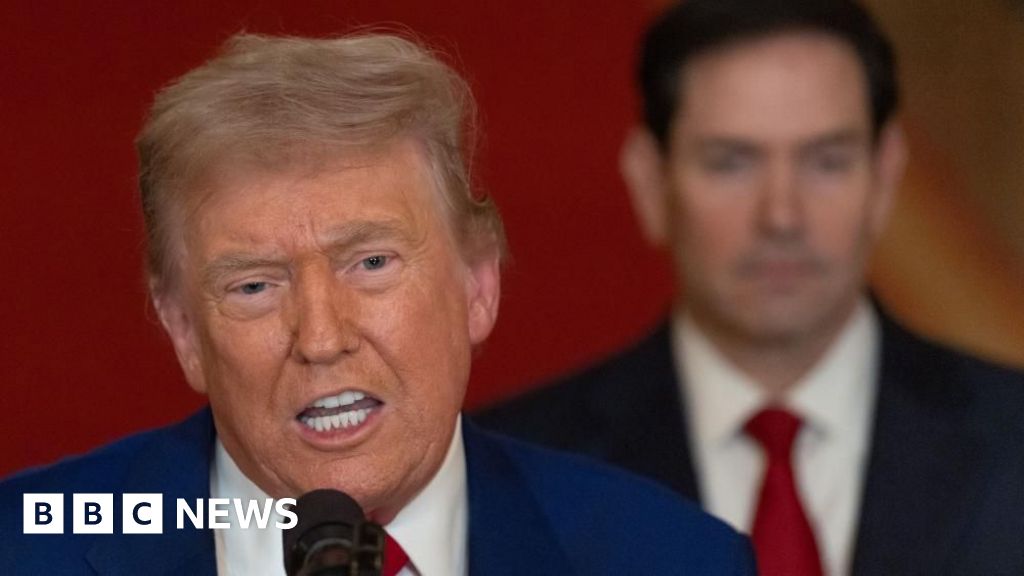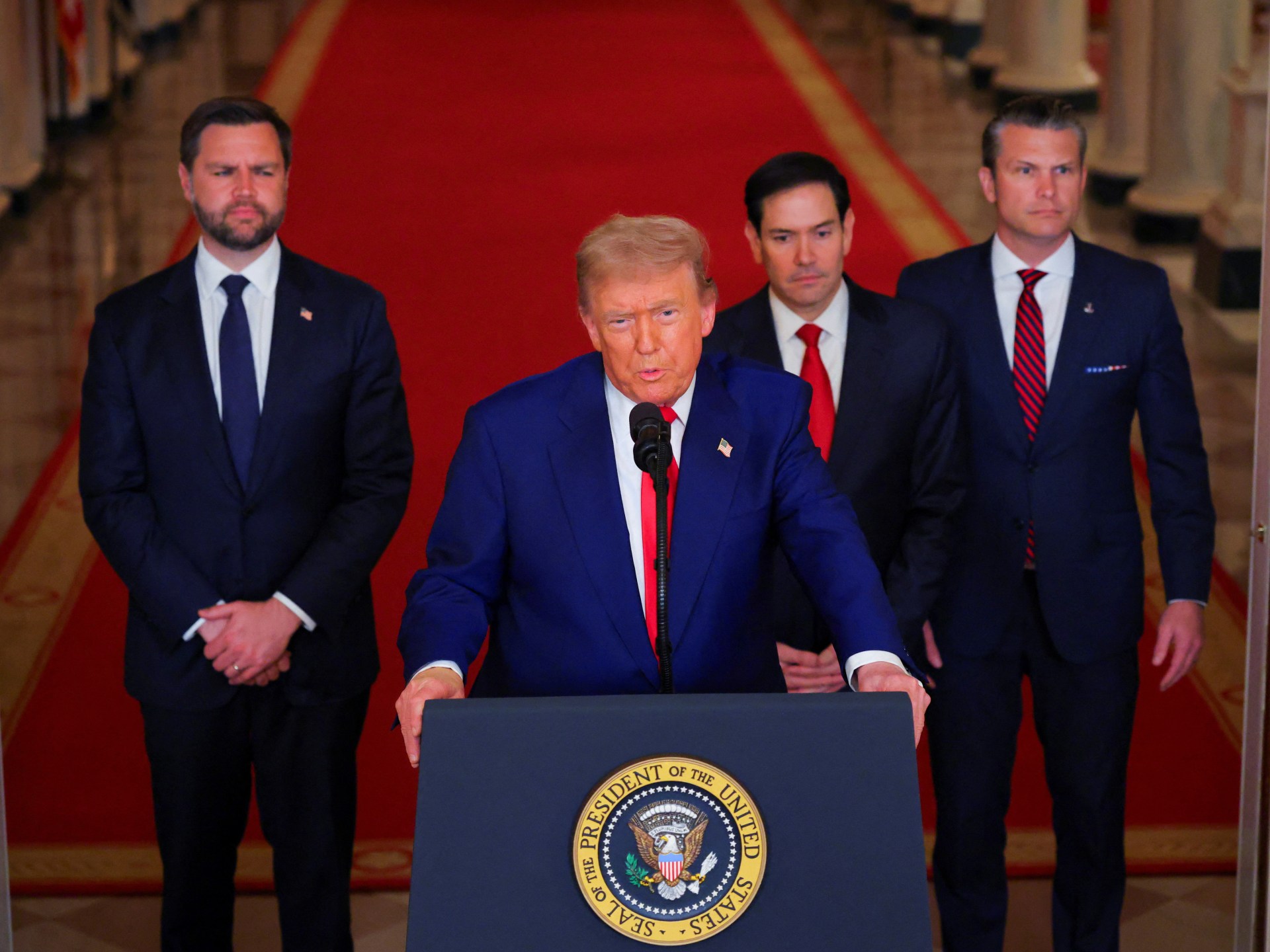Several close U.S. allies urged a return to the negotiating table in the wake of American strikes on Iran that fueled fears of a wider conflict, while noting the threat posed by Tehran’s nuclear program. Some countries and groups in the region, including those that support Iran, condemned the move while also urging de-escalation.
President Trump had said Thursday that he would decide within two weeks whether to get involved in Israel’s war with Tehran. In the end, it took just days. Washington hit three Iranian nuclear sites early Sunday in Iran.
While the amount of damage remained unclear, Iranian Foreign Minister Abbas Araghchi said the U.S. had “crossed a very big red line,” the time for diplomacy was over and Iran had the right to defend itself.
Some have questioned whether a weakened Iran would capitulate or remain defiant and begin striking with allies at U.S. targets scattered across the Persian Gulf region.
Here is a look at reactions from governments and officials around the world.
United Nations
U.N. Secretary General António Guterres said he was “gravely alarmed” by the use of force by the United States.
“There is a growing risk that this conflict could rapidly get out of control — with catastrophic consequences for civilians, the region, and the world,” he said in a statement on the social media platform X. “I call on Member States to de-escalate.
“There is no military solution. The only path forward is diplomacy.”
United Kingdom
British Prime Minister Keir Starmer warned of escalation beyond the Middle East as he called for all sides to negotiate a diplomatic end to the crisis, saying stability was the priority in the volatile region.
The U.K., along with the European Union, France and Germany, tried unsuccessfully to broker a diplomatic solution in Geneva last week with Iran.
Starmer said Iran’s nuclear program posed a grave threat to global security.
“Iran can never be allowed to develop a nuclear weapon and the U.S. has taken action to alleviate that threat,” Starmer said.
Russia
Dmitry Medvedev, who serves as deputy head of President Vladimir Putin’s Security Council, said several countries were prepared to supply Tehran with nuclear weapons.
He didn’t specify which countries, but said the U.S. attack caused minimal damage and would not stop Tehran from pursuing nuclear weapons.
Russia’s Foreign Ministry said it “strongly condemned” the airstrikes and called them a “a gross violation of international law, the U.N. Charter, and U.N. Security Council resolutions.”
Iraq
The Iraqi government condemned the U.S. strikes, saying the military escalation created a grave threat to peace and security in the Middle East. It said it poses serious risks to regional stability, and it called for diplomatic efforts to de-escalate the crisis.
“The continuation of such attacks risks dangerous escalation with consequences that extend beyond the borders of any single state, threatening the security of the entire region and the world,” government spokesman Bassem al-Awadi said in the statement.
Egypt
President Abdel Fattah Sisi warned of “grave repercussions” for expanding the Middle East conflict and urged a return to negotiations.
Saudi Arabia
Saudi Arabia, which previously condemned Israel’s strikes on Iran’s nuclear facilities and military leaders, expressed “deep concern” about the U.S. airstrikes, but stopped short of condemning them.
“The Kingdom underscores the need to exert all possible efforts to exercise restraint, de-escalate tensions, and avoid further escalation,” the Foreign Ministry said in a statement.
Qatar
Qatar, which is home to the largest U.S. military base in the Middle East, said it “regrets” escalating tensions in the Israel-Iran war.
Its Foreign Ministry in a statement urged all parties to show restraint and “avoid escalation, which the peoples of the region, burdened by conflicts and their tragic humanitarian repercussions, cannot tolerate.”
Qatar has served as a key mediator in the Israel-Hamas war.
Hamas and the Houthis
The Houthi rebels in Yemen and Hamas in the Gaza Strip condemned the U.S. strikes.
The Houthi political bureau in a statement called on Muslim nations to join “the Jihad and resistance option as one front against the Zionist-American arrogance.”
Hamas and the Houthis are part of the “Axis of Resistance,” a collection of pro-Iranian proxies backed by the Tehran government stretching from Yemen to Lebanon that for years gave the Islamic Republic considerable power across the region.
Lebanon
Lebanese President Joseph Aoun said the U.S. bombing could lead to a regional conflict that no country could bear and called for negotiations.
“Lebanon, its leadership, parties, and people, are aware today, more than ever before, that it has paid a heavy price for the wars that erupted on its land and in the region,” Aoun said in a statement on X. “It is unwilling to pay more.”
Pakistan
Pakistani Prime Minister Shehbaz Sharif, who spoke by phone with Iranian President Masoud Pezeshkian, condemned the U.S. strikes as a “serious violation of international law,” his office said.
The condemnation comes less than 24 hours after Sharif’s government said on X it was recommending Trump for the Nobel Peace Prize for his role in defusing the recent India-Pakistan crisis.
China
China condemned the U.S. strikes on Iran, calling them a serious violation of international law that further inflamed tensions in the Middle East.
In a statement, the Chinese Foreign Ministry urged all parties — especially Israel — to implement a cease-fire and begin dialogue.
“China is willing to work with the international community to pool efforts together and uphold justice, and contribute to the work for restoring peace and stability in the Middle East,” the ministry said.
European Union
The European Union’s top diplomat said Iran must not be allowed to develop a nuclear weapon, but she urged those involved in the conflict to show restraint.
“I urge all sides to step back, return to the negotiating table and prevent further escalation,” EU foreign policy chief Kaja Kallas said in a post on social media.
Italy
Prime Minister Giorgia Meloni said she discussed the worsening crisis with several other members of the Group of 7 leading industrial nations, as well as the Saudi, Emirati and Qatari leaders, and all agreed to work toward negotiations to prevent a widening conflict.
European Council
President Antonio Costa said he was “deeply alarmed” by the bombings and called on all parties to “show restraint and respect for international law and nuclear safety.”
“Too many civilians will once again be the victims of a further escalation,” Costa added. “The EU will continue engaging with the parties and our partners to find a peaceful solution at the negotiating table.”
Netherlands
Dutch Foreign Minister Caspar Veldkamp, whose country is hosting a summit of NATO leaders including Trump on Tuesday and Wednesday, said the government’s national security council would meet later to discuss the issue.
He said the U.S. attacks amounted to “a further escalation of a worrying situation in the Middle East.”
Latin America
Left-wing Latin American governments expressed fierce opposition to the U.S. strikes.
Iran-allied Venezuela called the attacks “illegal, unjustifiable and extremely dangerous.” Colombian President Gustavo Petro said they were an insult to the Middle East. Chilean President Gabriel Boric said they violated “rules we have established as humanity.” Mexico’s Foreign Ministry made “an urgent call for peace.”
In contrast, Argentina’s hard-right president, Javier Milei, a loyal ally of Trump and Israeli Prime Minister Benjamin Netanyahu, praised the attacks on social media. “Terrorism, never again,” his spokesperson said.
Japan
Japanese Prime Minister Shigeru Ishiba told reporters Sunday that it was crucial to calm the situation as soon as possible, adding that the Iranian nuclear weapons development also must be prevented.
Ishiba, asked whether he supports the U.S. attacks on Iran, declined to comment.
The Vatican
Pope Leo XIV made a strong appeal for peace during his Sunday Angelus prayer in St. Peter’s Square, calling for international diplomacy to “silence the weapons.”
After an open reference to the “alarming” situation in Iran, the first American pontiff stressed that “today more than ever, humanity cries out and invokes peace, and it is a cry that demands reason and must not be stifled.”
Pope Leo urged every member of the international community to take up their moral responsibility to “stop the tragedy of war before it becomes an irreparable abyss.”
